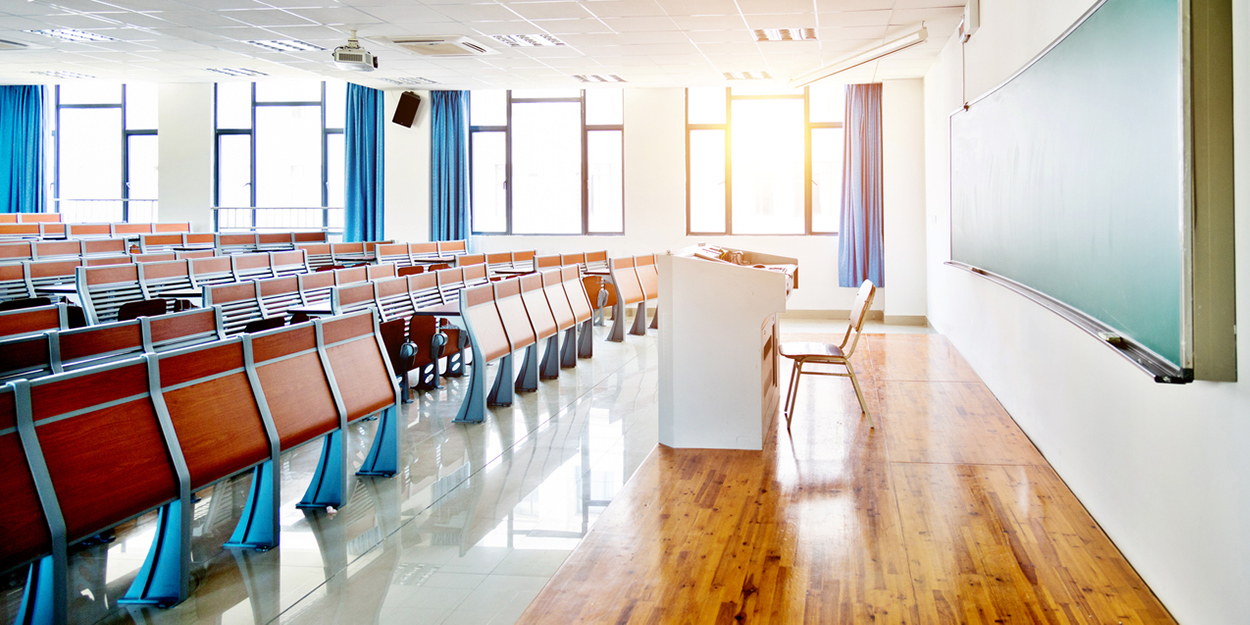As the Covid-19 pandemic continues to upend American life, colleges and universities are bracing for a significant drop in student enrollment. The American Council on Education, a higher education lobby group, projects that on-campus college enrollment will fall by 15% in the fall semester, costing institutions about $23 billion in foregone revenue. That’s enough of a hit to the sector to force many campuses to close. But schools that can remain open through the pandemic are poised to capture a surge in enrollment once it’s safe for students to return to the classroom.
It’s almost certain that college enrollment in the coming academic year will drop. Even if the pandemic is under control such that campuses can reopen by the fall, students may be reluctant to sit in crowded lecture halls while the virus remains at large. If the pandemic is still too dangerous to allow in-person learning to resume, most colleges will move instruction online. Many students will balk at the prospect of paying full tuition to learn from their computers, especially those at expensive private colleges. Either scenario promises a short-term fall in the number of students enrolled.
Though much uncertainty remains, some colleges have already made their decisions regarding on-campus operations, in the hope that students will be more willing to commit to a school if they have some assurance of what form their education will take. Boston University has announced that it will reopen its residential campus for the fall semester. California State University–Fullerton has gone the other direction and currently plans to start its fall term online. Other institutions will undoubtedly feel pressure to make a decision one way or the other.
Some institutions are using other levers to attract students for the fall. Southern New Hampshire University is offering free tuition to all incoming freshmen who enroll in its campus-based programs next year and will reduce published tuition for following years by 61%. SNHU is betting that such headline-grabbing price cuts will lead prospective students to enroll in the fall, rather than defer for a year until the pandemic is under greater control.
Many universities are also worried about a fall in international student enrollment as borders close and overseas travel grinds to a halt. International students tend to receive far less financial aid than domestic students, so they are a major source of cash for universities. So dependent is the University of Illinois on these students that the school took out an insurance policy against a drop in Chinese student enrollment.
Undoubtedly, these pandemic-related pressures will lead to a drop in aggregate revenue for the nation’s colleges and universities, which will force many campuses to close their doors for good. But those that survive the coming drop are positioned well to absorb a boom in student enrollment once the pandemic is under control.
The pandemic-driven economic recession has forced 26 million Americans to apply for jobless benefits over the past five weeks, and analysts project that the unemployment rate will reach double digits. High unemployment is likely to persist even after the pandemic subsides. Historically, college enrollment has surged during periods of high unemployment as students consider going back to school a better option than waiting around for a job in a weak labor market.
College enrollment peaked at 21 million during the Great Recession, which was an all-time high both in absolute numbers and the share of the relevant population enrolled. As the economy has improved and jobs have become easier to find, the college enrollment rate has fallen. That trend is sure to reverse itself once the unemployment rate rises again.

Moreover, in previous recessions, college enrollment has been subject to a ratchet effect: enrollment rises during the downturn but does not return all the way to its pre-recession low during the next economic boom. In addition to their cyclical effects, recessions appear to cause permanent rises in the level of college-going as more employers come to expect college degrees from job applicants. This will be a boon for the nation’s colleges and universities once the pandemic is over.
Studies have also shown that tuition increases during recessions due to greater student demand for education. Also in response to demand, the federal government tends to appropriate more money for college aid. During the last recession, Congress boosted the maximum Pell Grant by $1,250 in real terms and created a new tax credit for college expenses worth up to $2,500 per year. These expansions in college aid helped more people go to college but also led to tuition hikes. With heavier enrollment and higher tuition, colleges and universities came out ahead, and tuition may continue to rise.
It’s true that state government support for higher education falls during recessions. But these declines in state spending tend to reverse themselves in the next economic expansion, while the federal government’s increased support for higher education is usually permanent. On net, these changes will facilitate increases in college enrollment (and revenues) in the medium to long term.
America’s colleges and universities are sure to lose students in the short term, thanks to Covid-19. But the pandemic will be temporary, while the structural forces affecting higher education are permanent. If history is any guide, a combination of higher unemployment and more generous federal funding will drive college enrollment to new heights once the pandemic subsides. The higher education sector will take a brief hit, but in the long run, it will be better than ever.
Preston Cooper is a higher education analyst and a PhD student at George Mason University. Follow him on Twitter here.
Interested in real economic insights? Want to stay ahead of the competition? Each weekday morning, e21 delivers a short email that includes e21 exclusive commentaries and the latest market news and updates from Washington. Sign up for the e21 Morning eBrief.
Photo by baona/iStock


